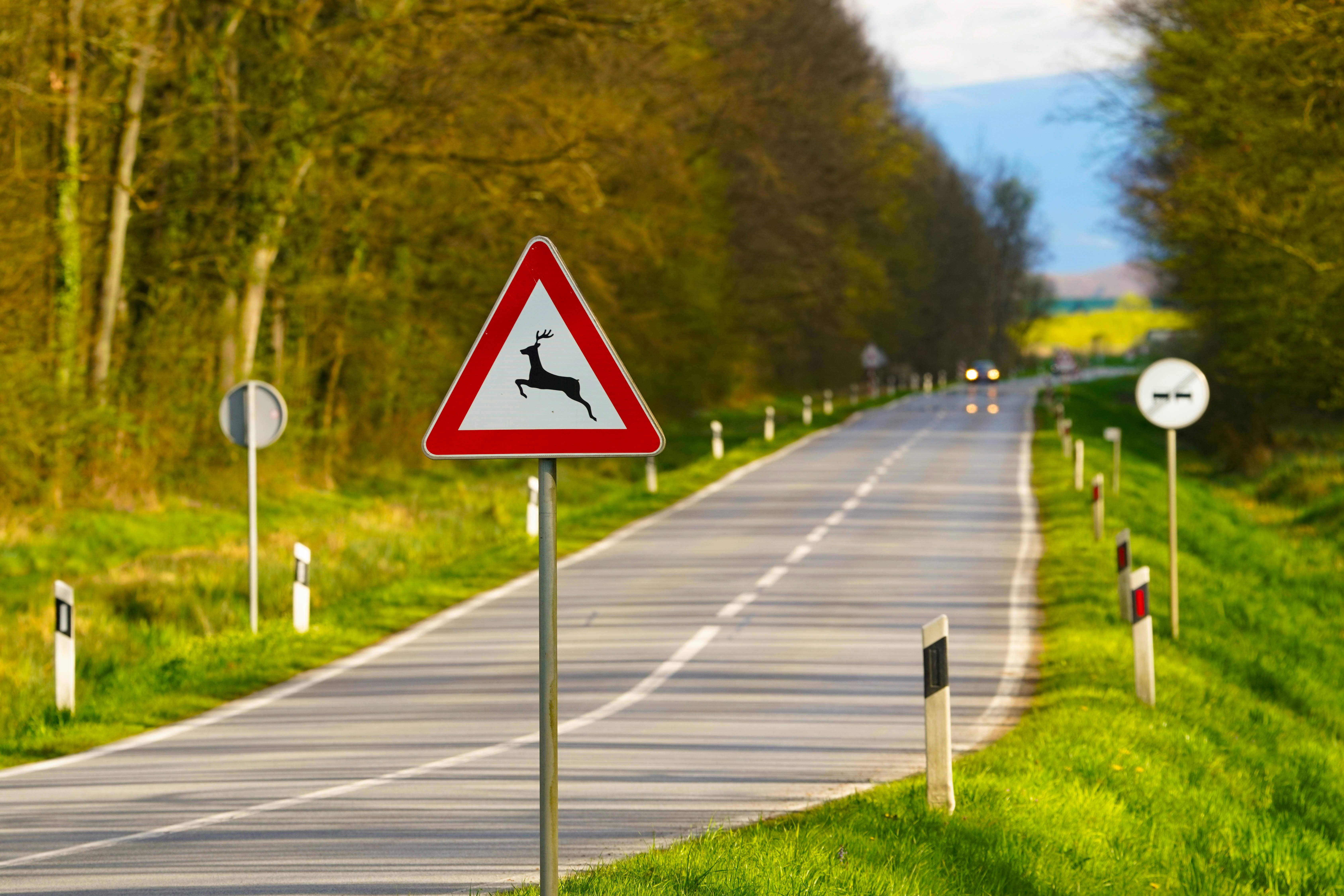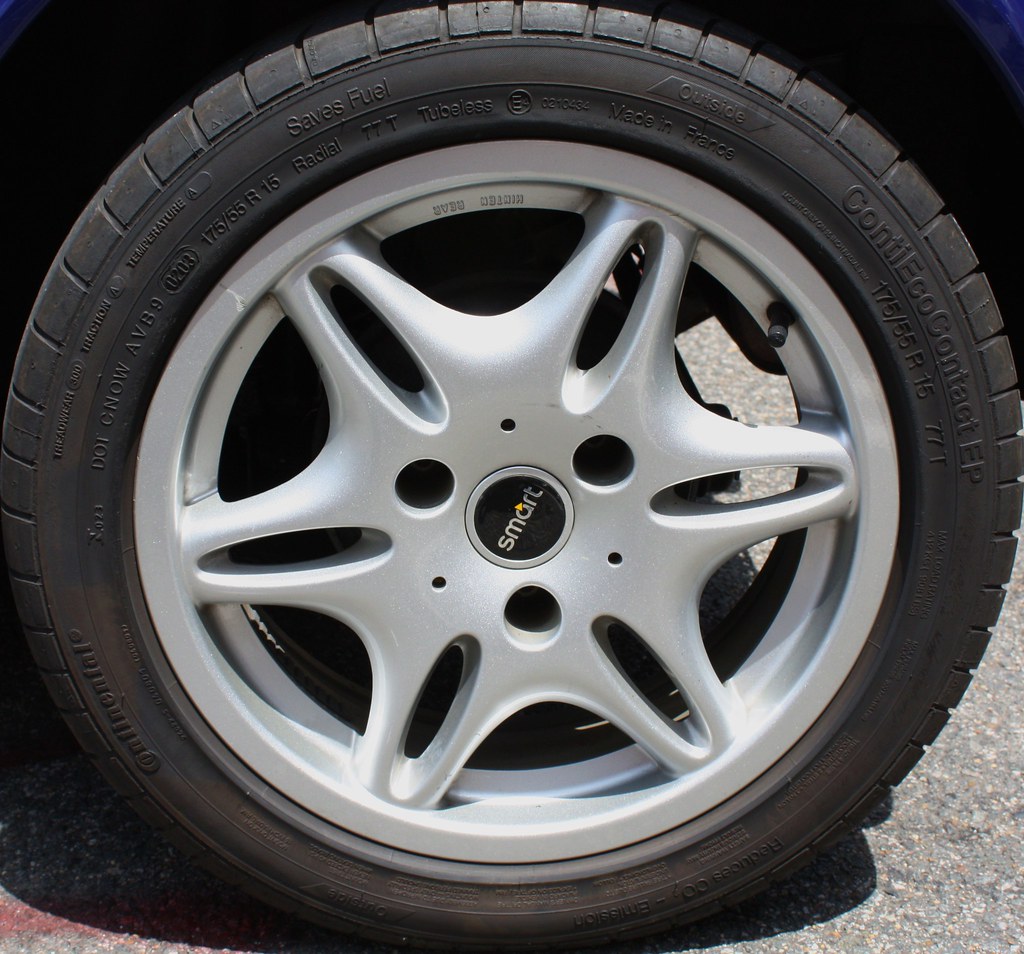
Driving on gravel or dirt roads presents a unique set of challenges compared to paved surfaces. The reduced traction, loose material, and varying surface conditions demand a different approach to ensure safety and maintain vehicle control. It’s a fundamental responsibility to adapt our driving techniques to these demanding environments, transforming potential hazards into manageable situations with the right knowledge.
Unlike the predictable grip of asphalt or concrete, gravel roads can cause tires to sink, slide, or lose grip unexpectedly. This calls for a proactive mindset and a set of practical strategies to mitigate risks. Understanding the specific dynamics of how your vehicle interacts with a loose surface is the first step towards empowering yourself with the confidence to navigate these routes safely and efficiently.
Whether you’re heading to a remote campsite, exploring scenic backroads, or simply navigating a gravel driveway, mastering the art of driving on unpaved surfaces is a valuable skill. This comprehensive guide will equip you with essential rules and actionable tips, drawing directly from expert advice, to prepare your vehicle, refine your driving techniques, and anticipate potential hazards, ensuring a smoother and safer journey every time you venture off the beaten path.

1. **Prioritize Pre-Trip Vehicle Checks**Before embarking on any journey that involves gravel or dirt roads, performing a thorough vehicle check-up is absolutely essential. This proactive step is a critical safety measure, preventing unexpected breakdowns or dangerous situations in remote areas. Ensuring your vehicle is in top condition means meticulously reviewing components that will be under extra stress on unpaved surfaces.
A fundamental part of this preparation involves checking essential fluid levels, including engine oil, brake fluid, coolant, and windshield washer fluid. Proper levels ensure optimal performance and prevent overheating or component failure, which can be particularly problematic far from service stations. Additionally, inspect your vehicle’s overall condition for any loose parts, leaks, or visible damage that might worsen on rough terrain.
Beyond mechanical aspects, reliable navigation is crucial. While modern vehicles feature integrated GPS, signal can be unreliable in rural areas. Always carry a physical map as a backup or download offline maps to your smartphone. This ensures you can always find your way, even if technology falters, reinforcing safety in unfamiliar territory.
Read more about: Mastering Your Heavy-Duty Diesel: 15 Essential Fluid Checks for Peak Performance and Longevity

2. **Optimize Tire Pressure for Gravel**One of the most critical adjustments for gravel road driving is optimizing tire pressures. Unlike paved surfaces where higher pressures are typical, gravel roads demand a different approach. Lowering tire pressure slightly creates a larger contact patch, significantly enhancing traction on loose, uneven surfaces. This increased grip is vital for maintaining control during turns or braking.
The correct pressure varies by vehicle and road conditions. As a guideline, “For a 4WD usually running at 40psi, aiming for 28-30psi is advisable.” Standard passenger vehicles typically require a few psi below their standard recommended levels on dirt roads. This adjustment also cushions against large rocks and irregularities, improving vehicle control, ride comfort, and mitigating tire damage from sharp impacts.
Remember this adjustment is specific to unpaved conditions. Upon returning to paved roads, reinflate tires to standard pressures. Driving on pavement with underinflated tires leads to excessive heat buildup, premature wear, and reduced fuel efficiency. Always carry a reliable tire pressure gauge and a portable air compressor for safe transitions between surfaces.
Read more about: The Architectures of Safety: Dissecting 14 Landmark Vehicle Features for a Secure Future

3. **Verify Suspension and Clearance**Your vehicle’s suspension system is paramount for safe gravel road driving, acting as its first line of defense against rough terrain. A well-maintained suspension absorbs impacts, ensuring tires stay in contact with the road and maintaining stability. Before heading out, a thorough check-up is non-negotiable for optimal performance on challenging surfaces.
This check-up must include inspecting shock absorbers, springs, and joints for good condition and any signs of wear or damage. Worn components compromise damping and stability, leading to a bouncy ride and reduced control. A robust suspension ensures structural integrity, crucial for handling the constant jarring of unpaved roads.
Furthermore, a well-maintained suspension directly contributes to increased vehicle clearance – “The height of the vehicle’s chassis from the ground.” High clearance is essential to avoid scraping the underside on larger obstacles, rocks, or ruts. This significantly reduces the risk of costly damage to vital undercarriage components.
Read more about: Empower Your Ride: 12 Expert-Backed Steps to DIY a Truck Lift Kit Installation at Home

4. **Adopt a Slower, Deliberate Driving Pace**One of the most fundamental rules for safe gravel road driving is to significantly reduce your speed and adopt a deliberate pace. This is crucial due to the inherent limitations of loose surfaces. Driving too fast on gravel is the quickest way to lose traction and potentially control of your vehicle.
Reduced speed provides more reaction time for unexpected obstacles like potholes, washouts, loose rocks, or wildlife common on rural routes. Traveling slower ensures ample opportunity to identify hazards and react safely. It also directly prevents skidding, as loose gravel offers less grip, making sudden braking or sharp turns at high speeds extremely risky.
The advice to “reduce our speed gradually” is key. Smooth, progressive braking and acceleration are paramount, as rapid deceleration can unsettle the vehicle. This deliberate pace contributes to overall stability, helps mitigate dust clouds, and significantly reduces the impact force of kicked-up gravel, protecting your vehicle’s paint and undercarriage from damage.
Read more about: Navigate the Storm: 13 Essential Strategies for Drivers to Safely Handle Aggressive Road Rage Encounters

5. **Practice Gentle Steering and Braking**On unpaved surfaces, the finesse with which you operate your steering wheel and brake pedal directly impacts your safety. Aggressive or sudden inputs can instantly destabilize your vehicle on loose gravel. Practicing gentle steering and braking is paramount for continuous control and avoiding dangerous skids or loss of traction.
For steering, smoothness is key. “Sudden turns can lead to loss of traction.” Steer slowly and make gradual corrections, allowing the vehicle to respond without abrupt movements. Imagine drawing wide, smooth arcs, especially in curves. This gentle approach helps tires maintain consistent contact and traction with the shifting surface.
Braking on gravel also demands a delicate touch. Harsh braking can easily lock wheels, leading to an uncontrolled slide. The most effective method is to brake gently and progressively, starting well in advance. Apply consistent, light pressure rather than stabbing the pedal. This gradual application helps tires maintain grip and brings the vehicle to a controlled halt.
Read more about: The 15 Most Common Reasons Drivers Fail Their Road Test: Essential Fixes for Your DMV Exam

6. **Maintain Significant Following Distance**A simple yet highly effective safety measure on gravel roads is to significantly increase your following distance. This practice is crucial for two reasons: providing ample stopping distance and minimizing damage from kicked-up debris. Gravel road dynamics necessitate a much larger buffer than typically safe on paved highways.
On loose surfaces, braking distances are inherently longer due to reduced traction. More space between vehicles grants you necessary seconds and meters to react to sudden stops or hazards without harsh braking. This extra room allows for gradual, controlled deceleration, vital on gravel, preventing skids and maintaining control.
A substantial following distance also acts as a shield against flying gravel. As vehicles travel, tires kick up stones and dust, causing paint chips, cracked windshields, and dents. By keeping a safe distance, you reduce the likelihood of your vehicle being struck by airborne debris, saving on costly repairs and improving visibility if the lead vehicle kicks up dust.
Read more about: Beyond the Hype: 14 Films That Absolutely Blew Our Expectations Out of the Water

7. **Navigate Muddy Conditions with Momentum and Caution**Encountering muddy or slippery unpaved roads presents distinct challenges, drastically reducing traction and risking loss of control or getting stuck. Success lies in a delicate balance of careful anticipation, maintaining consistent momentum, and avoiding abrupt actions.
Start by anticipating slipperiness; “approach with caution.” Assess mud depth if possible and look for firmer tracks. “Maintain momentum” means keeping a steady, moderate pace to power through without rapid acceleration or deceleration, which could cause wheel spin or bogging down. Consistent, gentle throttle is key.
Crucially, “avoid sudden movements” at all costs. Harsh braking and sharp turns lead to sliding and loss of directional control. All inputs—steering, acceleration, braking—should be smooth, slow, and deliberate. If sliding, gently ease off the accelerator and make subtle steering corrections to regain stability, remembering such surfaces are unpredictable.
Read more about: The Electric Pickup Truck Showdown: A Comprehensive Review of Ford F-150 Lightning and Tesla Cybertruck

8. **Actively Scan the Road for Hazards**When navigating rural and unpaved roads, your eyes are your primary defense. Unlike well-maintained highways, gravel roads can hide a myriad of unexpected hazards, from deep potholes and sudden washouts to loose rock piles and debris. Developing a proactive scanning habit, looking far beyond the immediate few feet of your vehicle, is paramount. This forward vision allows you critical extra seconds to identify potential dangers, assess their severity, and plan your safest course of action without needing abrupt, risky maneuvers.
It’s not just about what’s directly in front of you; the shoulders of the road, the curves ahead, and even the distant horizon can offer clues about upcoming conditions. Pay close attention to changes in surface color or texture, as these often indicate variations in gravel depth, muddy patches, or areas of recent erosion. Shadows can cleverly disguise deep ruts or potholes, making it essential to slow down and visually investigate ambiguous spots. Every ripple in the road, every change in the track, should be mentally processed as a potential challenge demanding your deliberate attention.
As you scan, you’re not just looking for existing hazards but also anticipating where new ones might emerge. A sudden dip might hide standing water after rain, while a dusty crest could conceal a blind curve. This continuous assessment allows you to adjust your speed and trajectory smoothly, rather than reacting sharply when a danger is already upon you. Remember, the goal is to make informed decisions well in advance, transforming potential surprises into manageable situations, thereby significantly reducing the risk of an accident on these unpredictable surfaces.
Read more about: Mastering Your Heavy-Duty Diesel: 15 Essential Fluid Checks for Peak Performance and Longevity

9. **Manage Dust and Reduced Visibility**Driving on gravel roads, especially in dry conditions, inevitably means encountering dust clouds. These clouds, kicked up by your own vehicle or by others, can dramatically reduce visibility to near zero in an instant, creating extremely hazardous driving conditions. It’s not just an inconvenience; heavy dust can cause us to lose sight of the road entirely, increasing the risk of collisions with other vehicles, obstacles, or even wildlife. Managing dust effectively is about both preventing its impact and knowing how to react when it obscures your view.
One of the most effective ways to manage dust is by maintaining an increased following distance from other vehicles. If you’re too close, the dust from the car ahead will engulf you, making it impossible to see. By dropping back and allowing the dust to settle, you preserve your line of sight and avoid driving blind. Similarly, reducing your speed when you’re the one generating dust minimizes its intensity and spread, making conditions safer for drivers behind you. This considerate driving practice benefits everyone on the road.
When visibility inevitably becomes poor due to dust, your immediate actions are crucial. Turn on your headlights, even in daylight, to make your vehicle more visible to others. If the dust is so thick that you cannot see the road or your surroundings, the safest course of action is to find a safe place to pull over and wait for the conditions to improve. Do not attempt to push through a blinding dust cloud; patience is a virtue that could save your life and prevent serious damage to your vehicle. Always prioritize clear vision to maintain control and anticipate hazards effectively.
Read more about: The Evolution of Money: 13 Key Insights into Its Past, Present, and Future

10. **Be Aware of and Respect Rural Traffic and Wildlife**Venturing onto country roads means sharing the space with a unique array of road users and inhabitants. Unlike urban thoroughfares, you’ll frequently encounter slow-moving rural traffic, such as tractors, farm equipment, or quarry vehicles. These machines often operate at significantly lower speeds and may take up more of the road, sometimes even crossing into your lane to navigate tight turns. Recognizing and respecting these local realities is a critical aspect of safe gravel road driving, demanding a different kind of alertness and patience.
When approaching or encountering farm machinery or other large, slow vehicles, it is imperative to slow down well in advance. These vehicles can be unpredictable in their movements, and their operators may have limited visibility. Always pass with extreme caution, ensuring there’s ample space and clear sightlines before making your move. Never assume they see you, and be prepared for them to stop or turn unexpectedly. A patient and cautious approach is not just a courtesy; it’s a vital safety measure that prevents potential conflicts and ensures a smoother journey for all.
Beyond human-operated vehicles, rural roads are the natural habitat for an abundance of wildlife. Deer, elk, rabbits, and even smaller creatures can dart onto the road without warning, especially during dawn, dusk, or nighttime hours. Always keep an eye on the shoulders and verges of the road, scanning for any movement or reflective eyes. Reducing your speed gives you more time to react if an animal unexpectedly appears in your path. Respecting local wildlife and livestock, which may also wander onto the road, is crucial; swerving suddenly to avoid a small animal can lead to a loss of control, so assess the risk carefully.
Read more about: 14 Essential Rules for Safer Driving in Heavy Snow and Ice: A Comprehensive Guide for All Drivers

11. **Carry Backup Navigation**While our smartphones and in-vehicle GPS systems have become indispensable tools for navigation, relying solely on them in rural or remote gravel road environments can be a critical error. Signal reception can be notoriously unreliable in vast stretches of the countryside, leaving you stranded without directions when you need them most. The battery life of electronic devices is also a constant concern, particularly if you’re exploring off the grid for extended periods. This makes carrying a reliable backup navigation system not just a good idea, but an essential safety rule.
The most dependable backup remains a physical map, specifically a detailed map of the area you plan to traverse. Before your trip, take the time to study the map, familiarize yourself with key landmarks, potential alternative routes, and the general direction of your journey. Knowing how to read a traditional map empowers you to navigate even when all technology fails, transforming a potentially dire situation into a manageable detour. Mark your planned route and points of interest, ensuring you have a clear visual guide.
In addition to a physical map, downloading offline maps to your smartphone or a dedicated GPS device is a smart digital backup. Many mapping applications offer this feature, allowing you to access detailed topographical information even without a cellular signal. Ensure these maps are current and cover your entire travel area. This combination of physical and digital backups provides comprehensive navigational resilience, ensuring you can always find your way, assess alternate routes, and remain safe even when venturing into truly remote and unfamiliar territory where assistance may be far away.
Read more about: 14 Ingenious Medieval Inventions That Still Power Our Modern Lives

12. **Protect Your Vehicle’s Undercarriage**Driving on gravel roads subjects your vehicle to unique stresses, and one of the most vulnerable areas is its undercarriage. The constant bombardment of loose rocks and debris kicked up by your tires can cause significant damage. These impacts can chip away at protective coatings, expose bare metal, and lead to serious issues like rust, corrosion, and damage to vital components such as the oil pan, transmission, fuel lines, and exhaust system. Protecting this often-overlooked part of your car is crucial for its longevity and your safety.
The first line of defense against undercarriage damage is cautious driving. Reducing your speed on gravel roads minimizes the force with which stones impact the underside of your vehicle. Avoiding large puddles or deeply rutted sections can also prevent severe scraping or impacts that could compromise components. However, even with the most careful driving, some exposure is inevitable, which is why proactive protection is so important.
Consider investing in protective accessories like skid plates or underbody shields. These robust additions create an extra layer of defense, absorbing impacts and deflecting gravel away from critical areas. For enhanced rust prevention, especially if you live in areas prone to road salt or frequent wet conditions, applying a rust-proofing treatment or undercoating provides a robust barrier against moisture and corrosive substances. Regular inspection of your undercarriage for signs of chipping paint, dings, or early rust formation allows for timely intervention, preventing minor issues from escalating into costly repairs.
Read more about: Your Ultimate Guide: 14 Financial Pitfalls Every Classic Car Collector Needs to Sidestep for a Successful Collection

13. **Regularly Inspect Tires for Gravel Damage**Your tires are the single most important component for maintaining control on any road, and especially on challenging gravel surfaces. The abrasive nature of loose gravel combined with the presence of sharp rocks means that your tires are under constant assault. To ensure ongoing safety and prevent unexpected breakdowns, regularly inspecting your tires for damage specific to gravel road driving is an essential rule. This vigilance helps you identify problems early and take corrective action before they compromise your journey.
After every drive on gravel, or at least regularly if you frequently traverse unpaved routes, make it a habit to thoroughly check your tires. Look for small stones lodged in the tire treads, which, if left, can cause uneven wear or even work their way deeper into the rubber over time. More critically, inspect the tread and sidewalls for cuts, gouges, bulges, or punctures. Sharp gravel can easily penetrate the tire, leading to slow leaks or sudden flats. Any visible damage, no matter how small, warrants immediate attention.
Beyond visible damage, pay attention to the overall condition and wear patterns of your tires. Gravel roads can accelerate tread wear due to the constant scrubbing action, and can also knock wheels out of alignment or balance, leading to uneven wear like cupping or scalloping. If you notice any unusual wear, or if your vehicle pulls to one side or vibrates at speed, have your alignment and balance checked by a professional. Early detection and remediation of gravel-induced tire damage will significantly extend tire life, enhance traction, and maintain crucial vehicle stability.
Read more about: Keep Your Ride Smooth: 9 Essential Ways to Prevent Flat Spotting in High-Performance Tires

14. **Understand How Gravel Can Damage Your Car**Gravel roads present a beautiful, often necessary, deviation from paved highways, but they also bring a unique set of risks to your vehicle. It’s not just about getting stuck or losing control; understanding the myriad ways gravel can inflict damage upon your car is crucial for both prevention and long-term vehicle health. From cosmetic blemishes to structural compromises, gravel is a formidable adversary, and knowing its potential impact empowers you to take appropriate preventative measures and mitigate costly repairs.
One of the most common and visible forms of damage is to your vehicle’s exterior. Loose stones, kicked up by tires, act as miniature projectiles, often resulting in paint chips, scratches, and even dents, particularly on the hood, fenders, and lower body panels. Your windshield and other windows are also highly susceptible to cracks or chips from flying debris, which can quickly compromise visibility and structural integrity. The force of impact increases with speed, so even small stones can cause significant aesthetic and safety issues.
Below the surface, gravel poses threats to your tires and underbody. Sharp gravel increases the risk of punctures and sidewall damage, accelerating tire wear and potentially leading to sudden flats. The undercarriage, including the oil pan, transmission, and exhaust system, is vulnerable to direct impacts that can cause dents, punctures, or compromise protective coatings, leading to rust and corrosion. Furthermore, prolonged exposure to rough gravel can prematurely wear out suspension components and throw wheel alignment out of whack, affecting handling and overall vehicle safety. Being aware of these specific vulnerabilities is the first step in actively protecting your investment.
Read more about: Keep Your Ride Smooth: 9 Essential Ways to Prevent Flat Spotting in High-Performance Tires

15. **Recognize the Importance of Vehicle Adaptability**At the heart of safe and confident gravel road driving lies a fundamental principle: vehicle adaptability. It’s not merely about the rules or the tips, but about a holistic understanding that your vehicle, and your driving style, must continuously adapt to the dynamic and often unpredictable nature of unpaved surfaces. Unlike the consistent grip of asphalt, gravel roads are living environments, constantly changing with weather, traffic, and erosion. Embracing this need for adaptability is key to mastering these routes and ensuring your safety.
This adaptability manifests in various ways, from mechanical adjustments to driver mindset. It means understanding that tire pressures optimal for paved roads are detrimental on gravel, and that a suspension system suitable for highways will be severely tested by rough terrain. It also means recognizing that the ‘normal’ speed and steering inputs you use daily simply won’t cut it when traction is compromised. Every rule discussed, from gentle braking to scanning for hazards, is a facet of this overarching principle: always be ready to change how you and your vehicle perform.
Ultimately, the ability to adapt empowers you to transform potential hazards into manageable situations. It cultivates a proactive mindset, where you’re constantly assessing, anticipating, and adjusting. This isn’t about fear; it’s about respect for the environment and the confidence that comes from being prepared. By integrating the importance of vehicle adaptability into every aspect of your gravel road journey, you not only protect yourself and your car but also unlock the enjoyment and adventure that these less-traveled paths offer. It’s about being in harmony with the road, whatever its surface.
Read more about: Beyond the Limelight: How 14 Celebrity Moguls Master Private Equity and Hedge Funds
Mastering gravel road driving is a journey of continuous learning and adaptation. By diligently applying these 15 essential rules, from meticulous vehicle preparation to acute hazard anticipation and the crucial understanding of your vehicle’s vulnerabilities, you empower yourself to navigate unpaved paths with confidence and efficiency. Embrace the challenges, respect the environment, and let these expert tips guide you to safer, smoother, and more enjoyable adventures off the beaten path. Your vehicle will thank you, and your peace of mind will be your constant companion.



